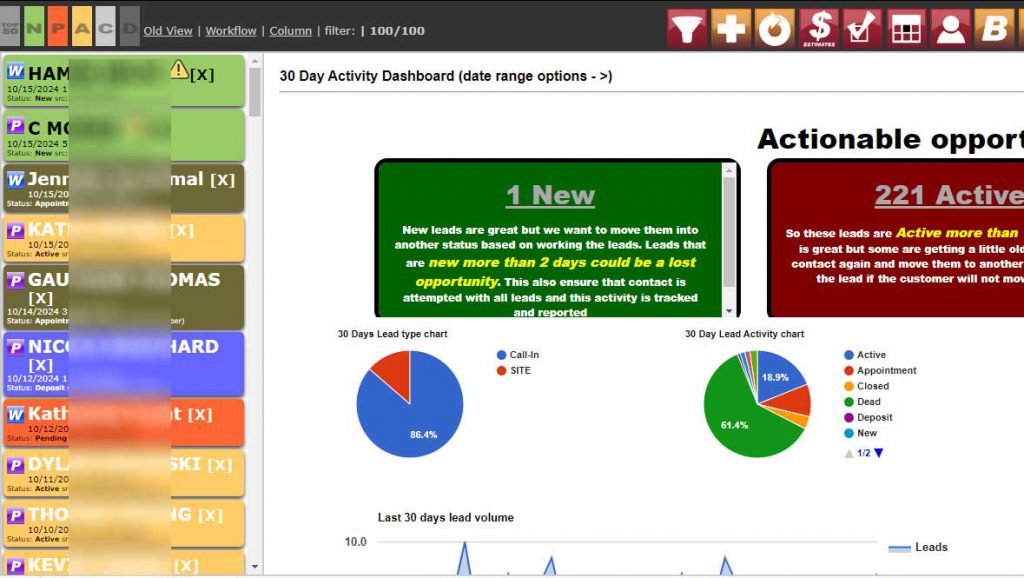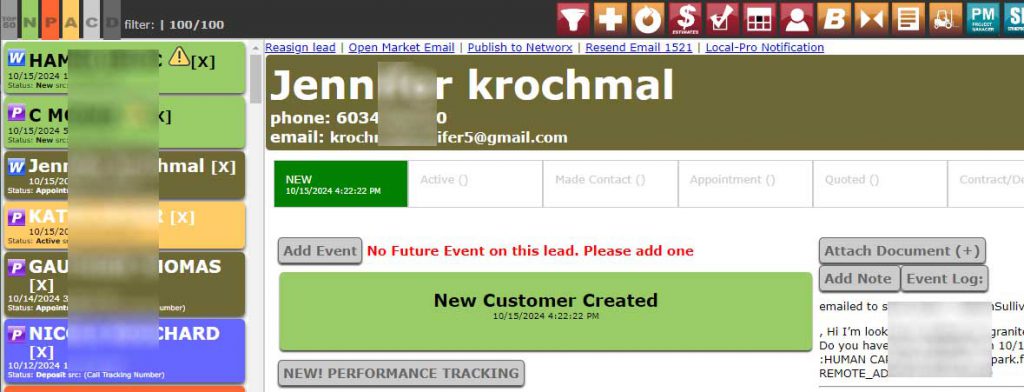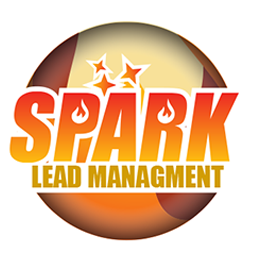Great! Here’s a more detailed breakdown of Step #1: Capture Lead Data and how to use CRM tools to nurture leads through the sales process, including the stages: New, Active, Pending, In Process, Funded, and Closed.

Call Tracking Data:
We use call tracking data to capture all inbound calls, dedupe recent call data and report on new lead data in real time. Each unique call generates a new lead record in the spark Lead manager. An email is generated to team members of the new call if the inbound call is missed. Standard setup simply direct forwards calls to the number of your choice as if the customer called your phone number directly. Custom Setups are available for various solutions.
Website form data:
We have various tools for collecting customer information as well as standard contact forms. These forms come with human validation with simple math problem to filter out automated form posting scripts. form Spam is also filtered out based on common tacktics to keep new lead records void of spam as much as possible.
Walking or unknown origin:
New lead reocord are easily added whne a source value is not available such as a walkin or call from unknown source. If the data is not present in the system a user can simply create the record and track the cusomer like all othercustomers in the system.
Data captured through the methods above create the records that are managed in the system.
- Lead Data Capture:
- Forms and Fields: Use forms to collect essential lead information, such as:
- Name/Company
- Phone Number
- Interests/Needs
- Tracking Sources: Include hidden fields to track where the lead came from (e.g., social media, website, referral).
- Forms and Fields: Use forms to collect essential lead information, such as:
- Integration with CRM:
- Automated Entry: Ensure that all captured lead data is automatically entered into your CRM system to avoid manual entry and errors.
- Segmentation: Categorize leads based on their source, behavior, or interests to tailor follow-up communications.

Nurturing Leads Through the Sales Process
- New:
- Immediate Acknowledgment: Send an automated welcome email acknowledging their inquiry and providing valuable resources (e.g., guides, testimonials).
- Initial Follow-Up: Schedule a follow-up call or email within 24 hours to further qualify the lead.
- Active:
- Personalized Communication: Tailor your interactions based on their interests and behaviors. Use CRM features to log every interaction.
- Provide Value: Share relevant content, case studies, or product information that aligns with their needs.
- Pending:
- Engagement: Continue engaging with the lead by providing additional information they may need to make a decision.
- Nurture Campaigns: Set a follow up based on interaction with the customer. This follow up should be used to trigger follow up based on customers next steps.
- In Process:
- Track Progress: Use the CRM to monitor the lead’s status and any documents or approvals needed.
- Regular Check-Ins: Maintain regular contact to answer questions and provide updates, ensuring they feel supported throughout the process.
- Funded:
- Congratulations and Onboarding: Once a lead is funded, send a congratulatory message and start the onboarding process.
- Gather Feedback: Ask for feedback on their experience so far and address any concerns.
- Closed:
- Celebrate the Win: Acknowledge the conversion and provide necessary next steps.
- Referral Requests: Encourage satisfied customers to refer others to your services.
- Long-Term Engagement: Add them to a customer nurture campaign for upselling or future engagement.
- DEAD
- Capture Why: When a lead is dead valueable information is captured to adjust campaigns or block keywords or compeitoirs to make advertising more efficiant. If calls come in for products and services that you do not offer this can trigger an evaluation of keywords driving traffic to websites social media and more and these holes in campaigns can be plugged in real time.
Using CRM Tools
- Automations: Set up workflows in your CRM to automate tasks like follow-ups, reminders, and email campaigns based on the lead’s status.
- Reporting and Analytics: Utilize CRM analytics to track conversion rates, lead sources, and overall sales performance to identify areas for improvement.
- Collaboration Tools: Enable team collaboration features in your CRM to ensure everyone involved in the sales process is aligned and informed.
By effectively capturing lead data and utilizing spark LEad managment tools, you can create a streamlined process that nurtures leads through each stage of the sales funnel, ultimately increasing conversions and customer satisfaction.
